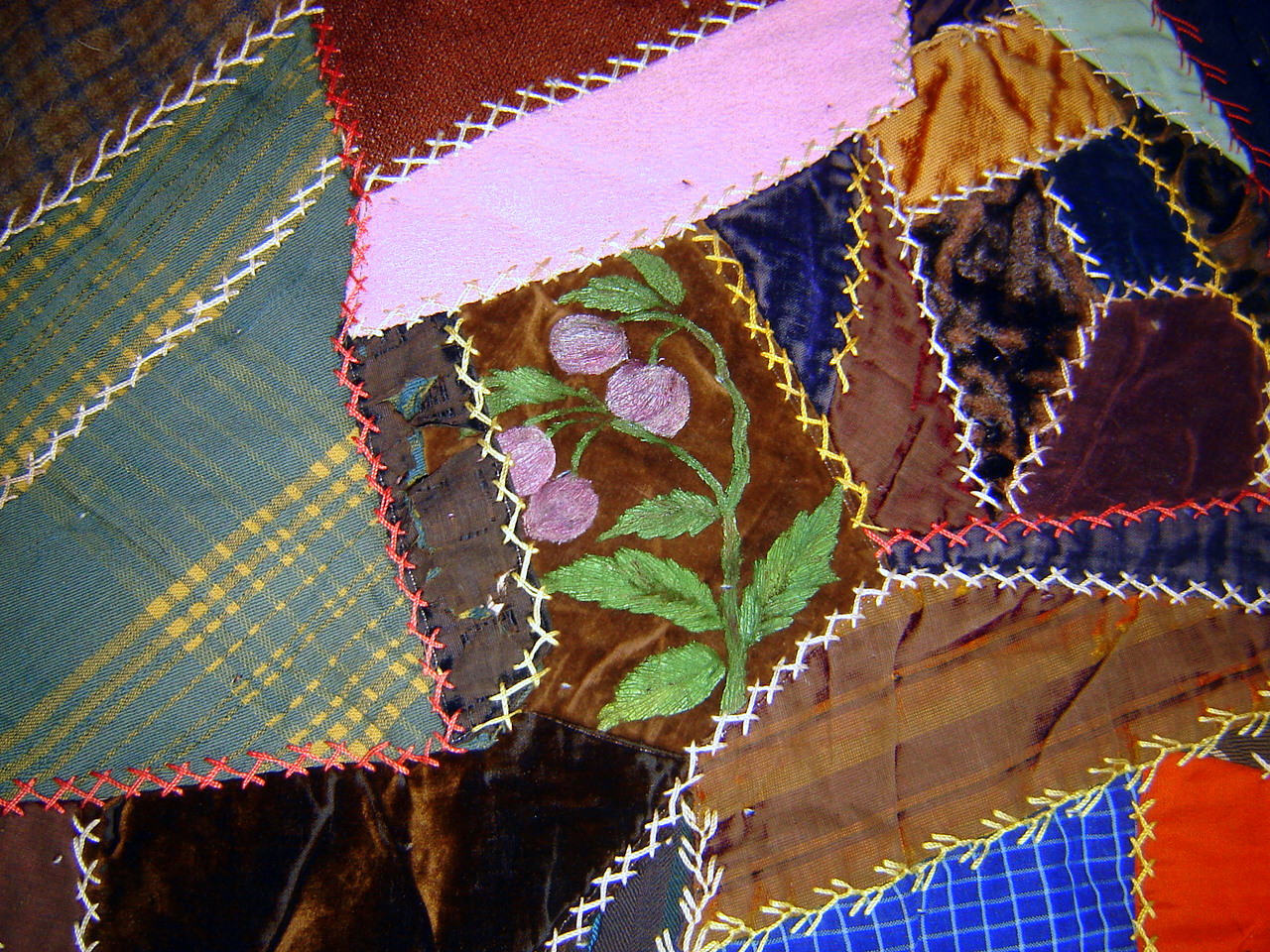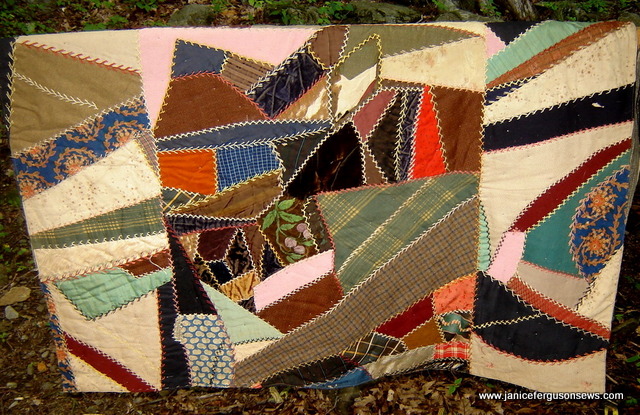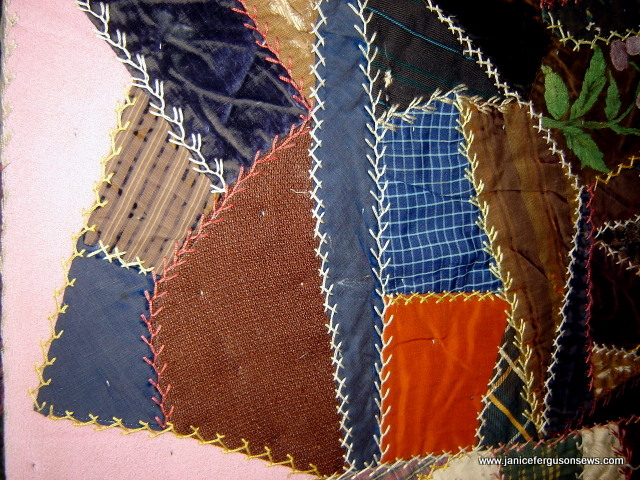In the crazy quilt of life, I’m glad you’re in my block of friends. Author Unknown
We don’t come to our cabin in North Carolina as frequently as we did before the grandchildren were born. After a lengthy absence from my favorite getaway, seeing the old treasures I placed there is a little like seeing old friends. This quilt is an old favorite that brings back fond memories of estate sale-ing with my friend Suzanne. One of those sales is where I found this oldie.
I love antique textiles–good, bad and mediocre. In the eyes of an expert appraiser, this old crazy patch quilt is charming at best and crude at worst. But I love it for its character, idiosyncrasies and history, about which I can only speculate.
This beauty is more representative of the classic crazy patch style. It is obvious  that the cabin quilt is extremely primitive in comparison.
that the cabin quilt is extremely primitive in comparison.
Crazy patch quilting, you might know, became the needlework rage in America between 1870 and 1880, though historically its origins go back as far as 1160. A brief overview of its history and progress as a legitimate form of needlework can be read here.  http://www.quiltropolis.net/articles/crazy-quilts.aspair.
This excerpt from Crazy Quilts by Cindy Brick explains that crazy quilts of that period were made of luxury fabrics and lavishly embellished. Each seam was covered with decorative stitching and most patches were embroidered with flowers, children or animals.  Cigar silks and even decorative ribbon in hat bands were applique’d in place.  For one susceptible to over stimulation, a well done crazy quilt could cause a migraine.
The crazy pieces were primarily decorative and rarely met the 3-layer standard for “real” quilts:, i.e. 1. a top, pieced or not, 2. filler of batting or whatever was at hand,   and 3. a backing. I have another crazy “quilt” which has no backing at all, which was common for these works. The stitches of every seam and embellishment are visible on the reverse side of a single layer. Intended to be draped over the back of a sofa or chair, the back was deemed unnecessary.
So what’s to admire or respect with this quilt? To me it is the quilter, a woman who needed both warm bedding for her family and an outlet for her creative spirit. This is a real quilt made by a real woman I would like to have known.
Made of sturdy woolen and bottom weight fabric scraps with only a token few fancy pieces,  this working class quilt nonetheless has every seam embellished, unnecessarily, with stitching. Only one patch has embroidery.  Was this piece embroidered in easier days and then incorporated into the quilt?

A heavy cotton batting is visible through tears in the worn top and backing. It is hand tied every 2-3″ with the knots on the back instead of front. Given its weight and wear, it was made as a barrier between Jack Frost and someone dear.
The miscellaneous pieces of fabric were likely genuine scraps. There is no color scheme and the irregular shapes seem to have been cut to get the maximum amount of fabric from a discarded garment. They certainly were not cut and joined to meet even low standards of creative balance.
When I look at this crazy quilt (circa 1920) hanging on a rack there, I am reminded of a quote Julia Golson shared with me. As she was searching for meaningful needlework quotes for a book she was writing, she came across this,  but chose not to use it because it was so sad.
A pioneer woman wrote to her sister, “I stitch as quickly as I can so my family won’t freeze and as beautifully as I can so my heart won’t break.” Those words seems to be especially apropos for this vintage bed cover.
The quilt no longer does the heavy work of keeping loved ones warm. Like so many residents of the cabins on our mountain, it is tired and retired. But it still gives me a warm feeling.
Francis Bacon, Irish artist 1909-1992, said, “Age appears best in four things: old wood to burn, old wine to drink, old friends to trust and old authors to read.”
I would have to add, and old quilts to love.




One response to “Antique Crazy Patch Quilt”